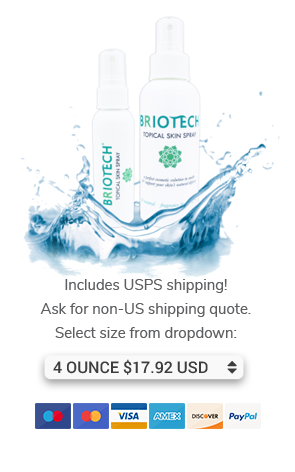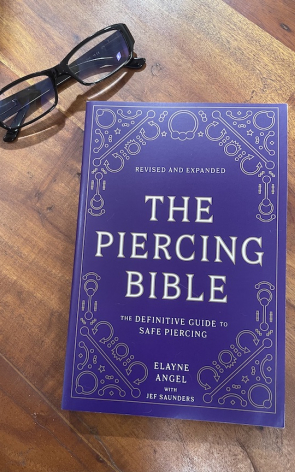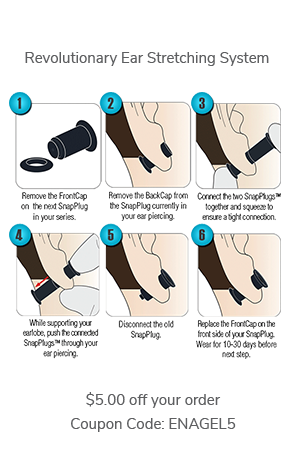I received an inquiry:
I want a Prince Albert piercing but having second thoughts about it. Please tell me the pros and cons of this piercing. K.
Hi K.,
Many of my clients describe the Prince Albert as their favorite piercing. It is a personal decision, but here's an introduction to it from my book, The Piercing Bible--The Definitive Guide to Safe Body Piercing (and there's much more in the book):
The Prince Albert (PA) Piercing
• Healing time: 4 to 8 weeks or longer
• Initial jewelry style: Ring—circular barbell preferred, or a curved bar
• Initial jewelry gauge: 12 or 10 gauge
• Initial jewelry size: Minimum 5/8 inch, but anatomically dependent
In the world of modern body piercing, the Prince Albert is a historic piercing, not because Queen Victoria’s consort wore one—he didn’t. It is because during the early years of modern body piercing, the PA was the most popular male genital piercing. Many heavily pierced men describe the Prince Albert as their favorite.
The PA looks like a severe puncture of the male organ. However, the piercing traverses only a very small amount of tissue, encompassing much less skin than the average earlobe piercing. In fact, it goes through some of the thinnest pierceable tissue on the body. Because it goes through the urethra, men are often concerned about whether the Prince Albert piercing is more dangerous, harder to heal, or more susceptible to infections. To the surprise of many, it is an easy piercing both to receive and to heal. Your own urine is not harmful to the piercing. In fact, it functions much like the saltwater treatments that are suggested to promote healing.
Prince Albert Piercing: Placement and Choice of Jewelry
The piercing is made on the underside of the penis at the juncture of the head and shaft; the jewelry rests within the urethra and is worn out the tip of the urinary meatus (urethral opening). Many men greatly enjoy the sensation of jewelry inside the urethra, though it may take a short time to become accustomed to its presence. The urethra is not in the center of the penis—it runs along the bottom—so the piercing passes through a membrane of skin.
The 10 gauge is a reasonable maximum starting thickness; the 12 gauge is less apt to bleed and can easily be stretched later. Let your piercer know if you have plans to stretch to jumbo gauges, because this should be factored in when marking the placement. If you don’t have a large penis or a high urethra (allowing for a substantial dis- tance between the piercing and the lower edge of the urethral opening), the piercer can mark the placement a little further down the shaft to cheat some extra tissue into the piercing. The skin it pierces through won’t be any thicker—it will just be a little further from the tip of your penis. You should have no less than 1/2 inch of tissue between the piercing and the edge of your urethra when your penis is flaccid. If you want to stretch up to large gauges, the piercing should encompass at least 5/8 inch.
You need not become erect during the procedure because your piercer can get a measurement for the jewelry diameter by simply pulling on the skin near the end of your penis between the spot for the piercing and the tip of your urethra.
Circular barbells are versatile for PAs because you can modify the ring diameter for a precise fit by spreading or narrowing the gap between the balls. You can make adjustments (or have your piercer help) even when your piercing is new.
Instead of a flat, pierceable surface, many men have a cordlike web in the center of the area where the Prince Albert is worn. In this case, the piercing can sometimes be set a little further down the shaft, or, more commonly, slightly off to one side. The web should be avoided because penetrating it makes an unstable, uncomfortable PA and tends to result in little flaps of cut tissue. If the skin is not webbed, then the piercing can safely go right in the center (if no visible blood vessels are present). Sometimes PAs are placed unnecessarily off to the side, probably for the same reason that a lot of so-called “pros” don’t pierce the midline under the tongue: poor training.
Several factors can help you and your piercer decide whether the piercing should be placed to the left or right of the web if it can’t go in the center. The piercer should look for visible blood vessels and, obviously, select the other side. He can also see if one side lines up better with your urethra; the jewelry will sit straighter when the piercing aligns with it.
If you are uncircumcised, you may still be built for a PA piercing. You must be able to comfortably retract your foreskin far enough for the piercing to be placed in an appropriate location. The piercer must check your tissue with your foreskin in both positions to be certain the jewelry will fit properly. If your foreskin fits snugly over your head, a curved bar may be needed for healing. You must not wear a ring so large that it prevents your foreskin from resting in its natural position. The ball at the tip of your penis must not be so small that a curved or circular barbell easily slips into your urethra. This will cause the remainder of the ring or bar to hang down from your piercing, which can irritate your tissue and might feel unpleasant inside.
The best thing I can suggest to help you make good decisions about piercing is to become a more well-educated consumer. If you found my website informative, I think you'll be amazed by all of the valuable facts and practical advice in my book, The Piercing Bible. It contains loads of information about evaluating piercers and studios, piercing placements, appropriate body jewelry sizes, styles, and materials, aftercare, troubleshooting, and much, much more.
These particular chapters will help you learn how to evaluate piercers (and body jewelry, which is also crucial to the success of a piercing):
Part 2 Groundwork and Preliminary Considerations
3 Risks, Myths, and Warnings ................................. 20
4 Is Piercing Right for You? .................................... 28
5 You and Your Piercer ........................................ 34
Part 3 Piercing Preparation
6 Picking and Preparing ...................................... 44
7 At the Studio .............................................. 49
8 Piercing Procedures ........................................ 56
9 Jewelry 101: Sizes, Shapes, and Materials ....................... 65
Part 4 The Holes
13 Below the Belt: Female and Male Genital Piercings ......................134
After reading The Piercing Bible you will be extremely well educated about the subject, and in fact, you'll have a lot more information than some "professional" piercers who are practicing in the field!
Select your shipping method and use the "Buy Now" button in the right-hand column on my web page: http://piercingbible.com, or call toll free: 888 888-1APP, or email: [email protected]. Orders are being filled by the Association of Professional Piercers. I serve on the Board of Directors as Medical Liaison. A portion of the proceeds from the book goes to the organization, and you will received a signed copy of my book.
Alternatively, you can get it from major booksellers, or Amazon.com. It is also available as an eBook for readers such as the Kindle, Nook, and iBooks.
Also, if you'd like to see me performing piercings, and demonstrating exactly where they should be placed and how quickly and easily an expert can perform them, I've got videos available here. (You'll see that a piercing can be performed in an instant!)
Let me know if you have other questions.
Sincerely,
Elayne
Elayne Angel, Author
The Piercing Bible--The Definitive Guide to Safe Body Piercing
President, Association of Professional Piercers
http://piercingbible.com/
http://www.facebook.com/elayneangel
http://twitter.com/elayneangel
http://www.linkedin.com/in/authorelayneangel




